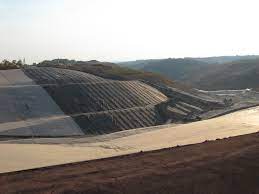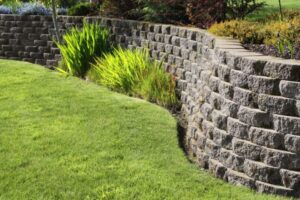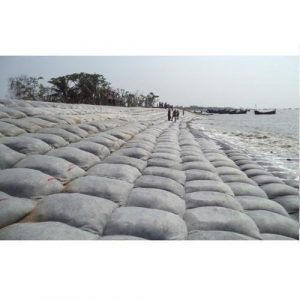What is Geomembrane lining?

Geomembrane liners are impervious membrane liners or barriers which can be utilized for a variety of primary and secondary containment applications. They are available in a vast range of physical, mechanical, and chemical resistance properties to ensure the highest quality performance no matter what the project is.
Geomembrane liners are significant for projects in the environmental, mining, oil and gas, and waste transportation industries. A Geomembrane liner offers a reliable, cost-effective solution to all your containment needs.
Table of Contents
General Applications for Geomembrane Liners
Secondary Containment
Geomembrane liners are most usually used for the primary and secondary containment of hazardous materials. Certain types of facilities like refineries and airports are required to have secondary containment plans in place to contain fuel, oil, sludge, and other chemicals. Specialty Geomembrane liners give a sound solution by preventing pollutants from spilling or leaking into the soil and groundwater. These liners can be counterfeit and installed to create large containment areas for underground tanks, above-ground tanks, and also portable chemical storage containers.
When choosing a Geomembrane liner it is important to choose a material that is pretty strong to provide long-term containment against UV exposure and extreme weather conditions and also thermal expansion and contraction. It must be durable and much thick to resist punctures or tears as well as the pressure of the primary storage container. Most essentially, the liner must not react or deteriorate after long-term contact with the toxic, flammable, combustible, or corrosive fuels or chemicals it may be holding.
Landfills

To look after our environment, landfills require the strongest protection possible to ensure no waste leakage can contaminate the groundwater beneath them. There are some ways that geomembranes liners can make landfills more efficient and eco-friendly. They can be applied for lining both primary and secondary solid-waste landfills. Instead of covering the landfill daily with soil, geomembranes liners can be utilized as alternative daily covers. This is required to preserve odors, vectors, and fires, littering, and scavenging. Geomembrane liners can as well be used to divert rainwater from landfill pits.
Roads and Highways

There are some environmental benefits from using geomembranes liners with roads and highways. They can function as a waterproofing barrier beneath asphalt roads. Geomembrane liners can as well prevent pollution from the salt used to de-ice winter roads.
Vapor Barriers
Geomembrane liners can play an essential role in construction as well. When moisture drains into the walls, ceilings, or foundation of a building, it can create and develop severe structural damage ahead of time and Geomembrane liners role as a barrier, preventing moisture from penetrating the walls and foundation of the building. In turn, this conserves mold, mildew, and fungus from evolving. These geomembrane liners can as well prevent hazardous chemicals from leaking into the soil or groundwater below the foundation of the building. Not just is this a very eco-friendly solution, but it can as well as save on the cost of building repairs down the road.
Geomembranes are being utilized in environmental, hydraulic, transportation, and oil and gas applications and the waste industry. The most common category is the continuous polymeric sheets. When larger geomembranes are required, they are thermally/chemically melted together at the seams for strength and durability. The size of the geomembranes is entirely customizable, so they are can be as small as a backyard fish pond or as large as a football field if necessary.
To get a better perception of what you can use a Geomembrane for, here are just some of the most popular uses:
- Being liners for potable or reserve water (e.g., the safe shutdown of nuclear facilities)
- Being fish pond liners
- Being liners for waste liquids (e.g., sewage sludge), radioactive or hazardous waste liquid
- Being liners for the agriculture industry
- Being liners for various waste conveyance canals
- Being liners for primary, secondary, and/or tertiary solid-waste landfills and waste piles
- Being linings for emergency spillways
- Being waterproofing liners within tunnels and pipelines
- To preserve and transit liquids in trucks
- To preserve and transit potable water and other liquids in the ocean
- Below highways to prevent pollution from deicing salts
- Underneath and adjacent to highways to capture hazardous liquid spills.
Typically, geomembranes are used wherever loss of material cannot be allowed, be that pure water, wastewater, vapor, soil, hazardous materials, or any other substance that doesn’t require escaping its designated space. Flowing, pooling, frozen, and standing liquids (and even vapors) can be so devastating in case not managed properly, these geomembranes have allowed industries to continue to develop and support many more projects than previously done advance of.
High-Quality Geomembrane Liner Supplier
Ocean Global manufactures the highest quality custom-made Geomembrane liners. We carry various types of geomembranes liners that are made for the specific requirements of your project, including:
LLDPE – Linear Low-Density Polyethylene
HDPE – High-Density Polyethylene
GCL – Geosynthetic Clay Liner
PVC – Polyvinyl Chloride
Suntech PVC – Polyvinyl Chloride
FAQs
Are geomembranes suitable for slope protection?
Yes, geomembranes can be used in slope protection applications to control erosion, prevent water infiltration, and stabilize the soil on slopes.
Can geomembranes be recycled?
Yes, certain types of geomembranes, particularly those made from recyclable materials like HDPE, can be recycled and used for other applications at the end of their service life.
Are geomembranes environmentally friendly?
Geomembranes are considered environmentally friendly as they help prevent soil and water contamination, control pollution, and safeguard natural resources.



